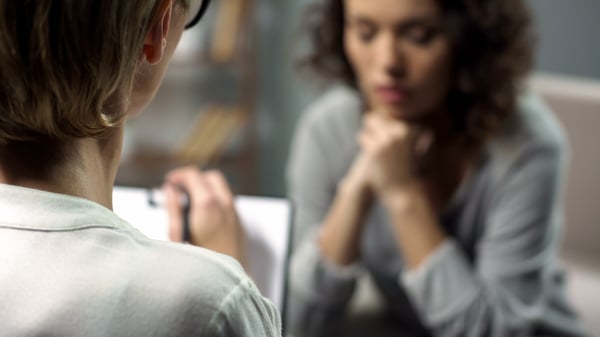From observing patients in the hospital to using telehealth and remote patient monitoring (RPM) to understand patient trends, healthcare providers are taking every chance they have to understand the implications of COVID-19, and the experiences of patients who suffer from it. Many clinicians are using telelehealth and RPM to better address symptoms and create care management plans for patients who no longer test positive yet are still struggling with side effects from the virus.Many clinicians report that their patients are experiencing long-term side effects after suffering from COVID-19. From increased fatigue to continued breathlessness to blood clots, effects on organs, and beyond, the list of side effects continues to grow.
Aside from the physical toll that COVID-19 has on patients, there are often mental and psychological symptoms that patients experience while they have the virus, and after. Patients are experiencing isolation and loneliness, which is leading to increased anxiety and depression. In many cases, the virus itself is causing various neurological, cognitive, and behavioral changes which present as memory retention issues, dementia-like symptoms, and PTSD symptoms.
Cognitive and Behavioral Challenges Post COVID-19
“COVID brain” or "brain fog" is a common virus symptom that affects the brain's cognitive and memory functions. According to Harvard Health, COVID has the potential to cause similar brain damage as that of stroke, lack of oxygen, or direct infection. Mimicking symptoms of Dementia or Alzheimer’s in patients of all ages, researchers are noticing an increase in forgetfulness and concentration in patients recovering from COVID.
Throughout the recovery process, occupational, speech, and language therapists are creating rehabilitation plans to address issues among various brain functions. Leveraging telehealth and virtual visits, therapists partner with a patient’s primary care provider to develop a rehabilitation plan that best fits the patient’s needs. This includes testing cognition, memory, and speech while offering exercises to address each symptom.
Increased Anxiety and Mental Health Symptoms
In addition to the toll COVID-19 is taking on cognition and memory, the virus has in some cases had a negative effect on patient's mental health. One study from The Lancet found that 20% of COVID-19 patients are diagnosed with a psychiatric disorder such as anxiety, depression, or insomnia within 90 days of being diagnosed with the virus.

Moving forward with COVID Recovery
Many providers are using telehealth and RPM to help their patients manage the lasting side effects of the virus. Telehealth and RPM programs have helped clinicians pivot how they treat patients to rethink care outside of the hospital or clinics four walls.
Telehealth and RPM programs have helped health system optimize capacity by ensuring beds are reserved for the most critical patients. They've been used to lessen the risk of infection to both patients and medical staff. In non-COVID patients, telehealth and RPM have been used as a way to monitor and manage illness at home. From treating COVID-positive patients exhibiting symptoms to treating COVID side effects, to making a safe space for mental health treatments, there's an endless amount of possibilities for telehealth and RPM programs.
Providers are quickly recognizing the shift that healthcare is taking in the direction of virtual visits and RPM. The pandemic has created a difficult situation for people with existing anxieties and mental health disorders, while also increasing the number of new symptoms in patients without a history. The influx of patients seeking mental health care, either because they’re experiencing loneliness, anxiety, or COVID-related neurological conditions is causing a huge jump in the use of mental health-focused telehealth programs. As patients express their willingness and acceptance of telehealth, providers are making it more accessible. Telehealth has often been referred to as “the future of healthcare,” but the pandemic has brought that future quickly into view.
